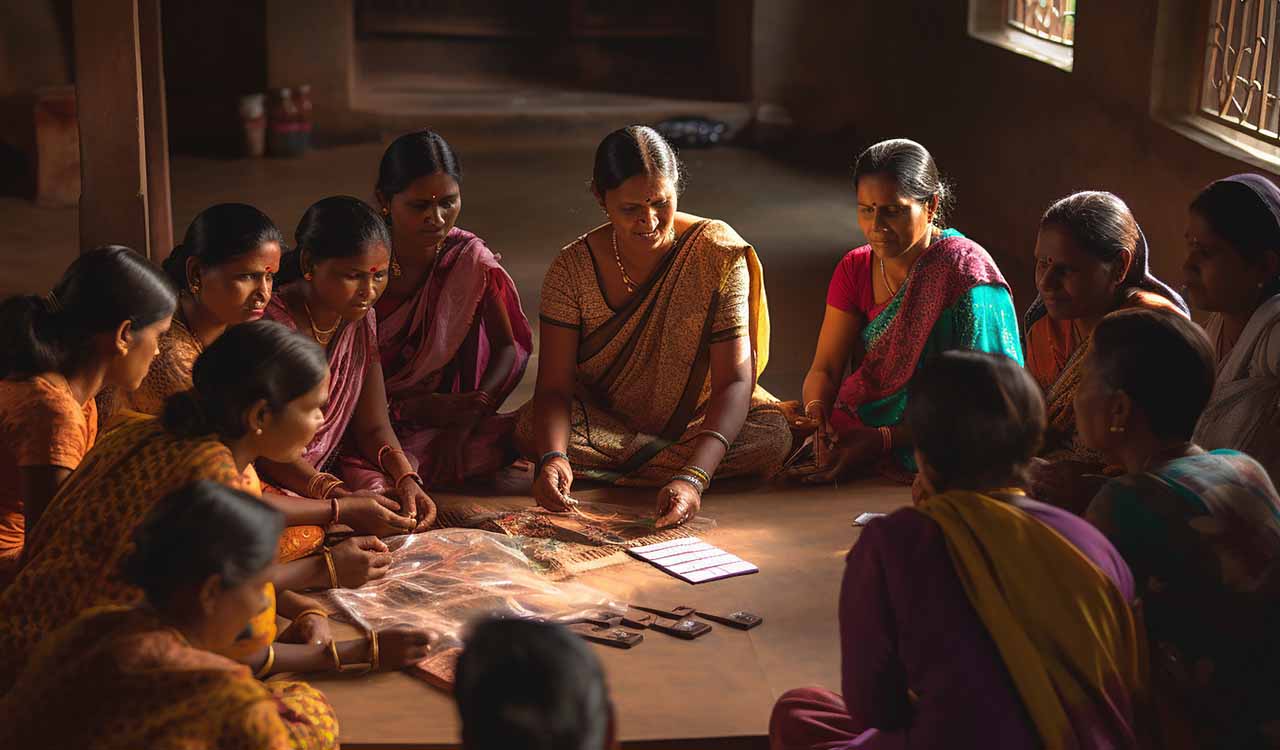Opinion: Can Sahkar bring Samriddhi? Making India’s cooperative policy work
The National Cooperative Policy, if executed effectively, can transform cooperatives from safety nets into engines for competitive, community-owned enterprises

By Amiya Antony, Anshika Chauhan, Amit Kumar
The United Nations General Assembly declared 2025 as the International Year of Cooperatives with the theme ‘Cooperatives Build a Better World’, highlighting their role in inclusive and sustainable development. In line with this, the Ministry of Cooperatives, Government of India, is also celebrating the year by highlighting the importance of cooperatives in achieving sustainable goals.
Also Read
As of July 2025, India has 8.44 lakh cooperatives, 2 lakh credit cooperatives, and 6 lakh non-credit cooperatives, with over 30 crore members nationwide. The last cooperative policy was formulated in 2002 and updated in September 2022 by the Ministry of Cooperation, established in 2021.
India’s recent National Cooperative Policy 2025 is a significant attempt to enhance the economic environment by making it more sustainable through the vision of ‘Sahkar-se-Samriddhi’ (Prosperity through Cooperation). It aims to create an “enabling legal, economic and institutional framework” that will bring a radical shift at the ground level and accelerate the transformation of cooperative enterprises.
The policy revolves around 6 pillars:
- Strengthening the foundation through legal reforms, better governance, access to finance, and digitalisation.
- Promoting vibrancy by creating business ecosystems, expanding exports, and rural clusters.
- Making cooperatives future-ready’ through technology integration, professional management, and cooperative stack.
- Promoting inclusivity and deepening reach by cooperative-led inclusive development and as a people’s movement.
- Entering new and emerging sectors such as biogas, clean energy, warehousing, and healthcare.
- Shaping young generation for cooperative growth through courses, training, and employment exchanges.
The policy aspires to triple the cooperative sector’s GDP contribution by 2034. It promises inclusion and economic uplift for historically disadvantaged groups, including women, youth, scheduled castes, and scheduled tribes. Cooperatives occupy a unique space — they are member-owned businesses operating within market systems while prioritising community well-being over profit.
The policy aims to harness this untapped potential, encouraging the sector to diversify beyond its agricultural roots into tourism, insurance, taxi services, and green energy. On a small scale, such diversification can protect communities from specific shocks. On a larger scale, it can boost rural contributions to GDP and reduce strain on urban infrastructure.
Inclusive Growth
The NCP focuses on women, Dalits, tribals, and youth, who constitute 48.4 per cent, 16.6 per cent, and 8.6 per cent of the population, respectively. More than 50 per cent of the youth are under the age of 25, and over 65 per cent under 35 years. These groups are not just beneficiaries but “economic multipliers”. Research in development economics shows that marginalised groups have higher marginal propensities to consume, meaning money earned by them circulates quickly in local economies. By involving these groups in cooperative ownership, the NCP could spark growth driven by local demand, reducing reliance on top-down stimulus efforts.
Cooperative ownership keeps profits and decision-making power within communities, promoting accountability, commitment, and a responsiveness to local needs. Over time, this creates a self-sustaining economic cycle. This inclusion of marganised groups is, therefore, a critical test of the policy’s credibility.
Digital and Institutional Reforms
Major reforms include increased digitisation of Primary Agricultural Credit Societies (PACS) and the establishment of Tribhuvan Sahkari University. The NCP aims to modernise PACS, transforming them from century-old agricultural lenders to multi-service hubs, offering over 20 services, including fertilizer and seed supply, LPG distribution, bill payments, and Common Service Centre facilities. The government plans to set up 2 lakh PACS by 2026, heavily investing in digital tools, making these institutions central to inclusive economic growth.
Tribhuvan Sahkari University aims to professionalise the cooperative sector by providing formal education, research, and training, targeting 17 lakh trained professionals over the next five years. Digitisation reduces unfair profit-seeking, curbs leakages, and enables data-driven decision-making. Structured cooperative education develops managerial skills necessary for expanding operations into diverse sectors, shifting the sector from subsistence-level towards a professional, market-competitive enterprise. Centralised monitoring will enhance accountability.
Digitalisation, Tribhuvan Sahkari University, and diversification offer immense potential but their success hinges on sustained investment in skills, management, and infrastructure
However, without targeted capacity-building, these goals may not be achieved. Only 25 per cent of rural households are digitally literate, with casual agricultural workers at just 13 per cent and Scheduled Tribes at 21 per cent. One cannot build empowerment on a foundation of exclusion. Massive investment in education, digital capacity, and governance reforms is needed, otherwise, local elites may dominate, undermining the policy’s inclusivity goals.
Diversifying to Empower
The policy promotes expansion beyond agriculture and dairy into taxi services, tourism, insurance, and green energy. This offers a rare opportunity to challenge private sector dominance and empower workers directly. For instance, the ‘Sahkar Taxi’ initiative will distribute profits directly to drivers, bypassing middlemen or platform operators, and improving livelihoods.
However, a major challenge will be the significant skill gap in running cooperatives, especially in the targeted rural and tribal communities. Training in management, technical skills, and sector-specific operations is crucial to prevent inefficiencies. Proper implementation, focusing on governance and capacity-building, will ensure that profits are shared among members.
The NCP goes beyond being just an economic plan; it is a vision for sharing growth, ownership, and opportunity. Its success will hinge on how well the government and cooperative institutions turn their ambitions into real actions. Digitalisation, Tribhuvan Sahkari University, and diversification present immense potential but require sustained investment in skills, management, and infrastructure.
If executed effectively, cooperatives could evolve from safety nets into engines for competitive, community-owned enterprises. It could make India a global leader in inclusive, sustainable economic models, or, if neglected, it risks becoming another well-meaning plan that falters in execution. The choice is ours.

(Amiya Antony and Anshika Chauhan are pursuing MSc (Economics & Analytics). Amit Kumar is Assistant Professor of Economics, Christ University, Delhi NCR)
Related News
-
Speeding car crashes into shops in Macha Bolarum; driver injured
10 mins ago -
Bangladeshi man held in Dehradun for illegal stay; converted Indian woman before marriage, say police
12 mins ago -
ECI begins three-day review of special electoral roll revision in Tamil Nadu
55 mins ago -
Darshan at Ram Temple to close ahead of tomorrow’s grand flag-hoisting ceremony
1 hour ago -
Delhi chokes as AQI nears 400; pollution returns to ‘very poor’ levels across NCR
1 hour ago -
Priyanka Chopra says ambition and achievement can coexist with a balanced life
1 hour ago -
China says Japan has “crossed a red line” with remarks on possible Taiwan intervention
2 hours ago -
Driver charred to death as moving car bursts into flames on ORR at Shamirpet
2 hours ago




